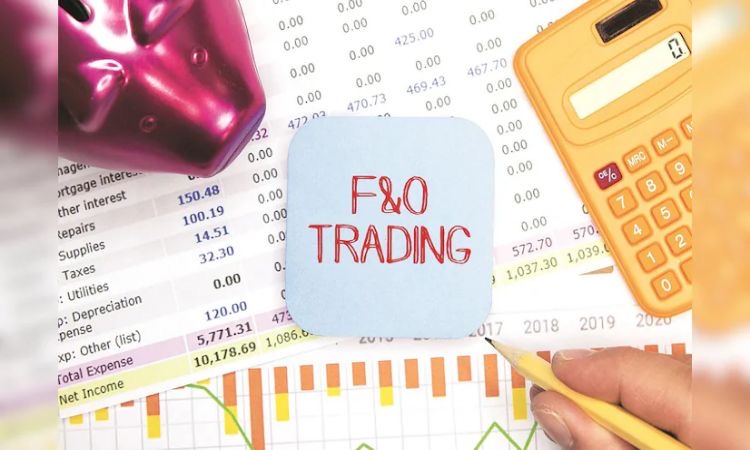Market volatility is one of the key parameters that may influence traders’ behavior in general, and in the F&O segment, this would be important. Probably in no time, it may cause ups and downs in prices, thereby affecting trading strategy and causing risks or opportunities in trading. Basically, a trader needs to understand how volatility affects F&O trading for better navigation through the uncertainty of the market.
Understanding Market Volatility
Market volatility is a measure that portrays the speed at which and the extent within which the prices change in the financial markets. High volatility means prices are changing extremely fast, while low volatility will indicate stable market conditions. These fluctuations are usually brought on by economic announcements, geopolitical events, and changes in investor sentiment.
But before discussing the impact of volatility, let’s understand what is F&O trading. F&O trading pertains to derivatives like, commonly known as futures and options. A future contract is an agreement to buy or sell an asset on a date in the future and at a specified price. An options contract provides the right, not the obligation, to buy or sell an asset within a set time period at a given price. The use of this type of derivative generally includes hedging, speculating, and adjusting the level of risk.
Volatility’s Influence on F&O Prices
The other major determinant in pricing futures and options contracts would have to be market volatility. In options, the premium itself will be directly affected by the fact that higher volatility raises the prospects of the options expiring in the money, which is good for the sellers while raising costs for buyers. During futures trading, this would be translated into larger price swings, where traders would need to adjust margin requirements more frequently.
● Futures: High volatility means that the value of a futures position can change rapidly. This could mean higher profits or losses. Traders should be in a position to take such a turn, which can make the trading riskier yet present opportunities for gains.
● Options Trading: Volatility has its direct impact on the pricing of options. The more volatile the market is, the wider the options premiums will be. This means it will be more expensive for a buyer to buy them, while sellers, on their part, will make a profit. Thus, higher volatility increases the cost for buyers and profits for sellers, while lower volatility means cheaper premiums with less potential profit to sellers.
The Volatility Index, or VIX, reflects the market’s expectations of near-term volatility based on options prices. It is also better known as the “fear gauge” of the market. A rising VIX infers that traders are expecting larger swings in price, while a falling VIX suggests a more stable outlook. Monitoring the VIX will, therefore, be useful for F&O traders to reshape their strategy appropriately during times of uncertainty.
Strategies for F&O Traders During Volatile Markets
In volatile markets, risk management is often the best road to take. Following are some strategies that could help one do so:
1. Hedging: traders can use options for hedging a potential loss in one’s future trading position or take a higher position of put options to protect a portfolio against decline.
2. Using Spreads: Options spreads-straddles and strangles-are ways in which traders can profit from a stock having a tremendous price move either higher or lower. It makes spreads a high-volatility option.
3. Managing Margins: The volatility often results in margin calls. Keeping a buffer of money may save traders from being compelled to close the position during market swings.
4. Reduction of Leverage: This will be helpful during periods of high volatility, enabling the reduction of risks due to sudden market movements.
Risks and Rewards of F&O Trading in Volatile Markets
Where the volatility brings an opportunity to make money for F&O traders, at the same time, it brings a risk of incurring massive losses.
● Higher Returns: Timely trades made during periods of high volatility return substantial amounts, especially in cases where the trader has forecast the market correctly.
● Risk of Losses: The same volatility that creates opportunities can also lead to rapid, unexpected losses; stop-loss triggers or forced liquidations hurt the shortsighted trader.
● Emotional Toll: High volatility forces many to distribute everything on the whims of fear or greed, such as panic selling or FOMO-the fear of missing out. The watchword during such times is discipline.
Market volatility constitutes a prime factor in F&O trading, as this factor, besides risks, somehow gets translated into potential rewards, too. He learns what F&O trading is and how different price movements influence the derivative contracts. While market volatility may bring in opportunities for gains, prudent risk management is highly indispensable. Hedging strategies, spreads, and margin management are a few strategies that traders may use to negotiate such choppy markets.
Monitoring facilities, such as through a Volatility Index, disciplinary adherence to strategy, clarity about market dynamics-all are vital tools for the trader to make intelligent decisions during the periods of heightened market uncertainty. It is in maintaining this delicate balance between risk and reward in volatility that long-term success will be determined in the arena of F&O trading.

